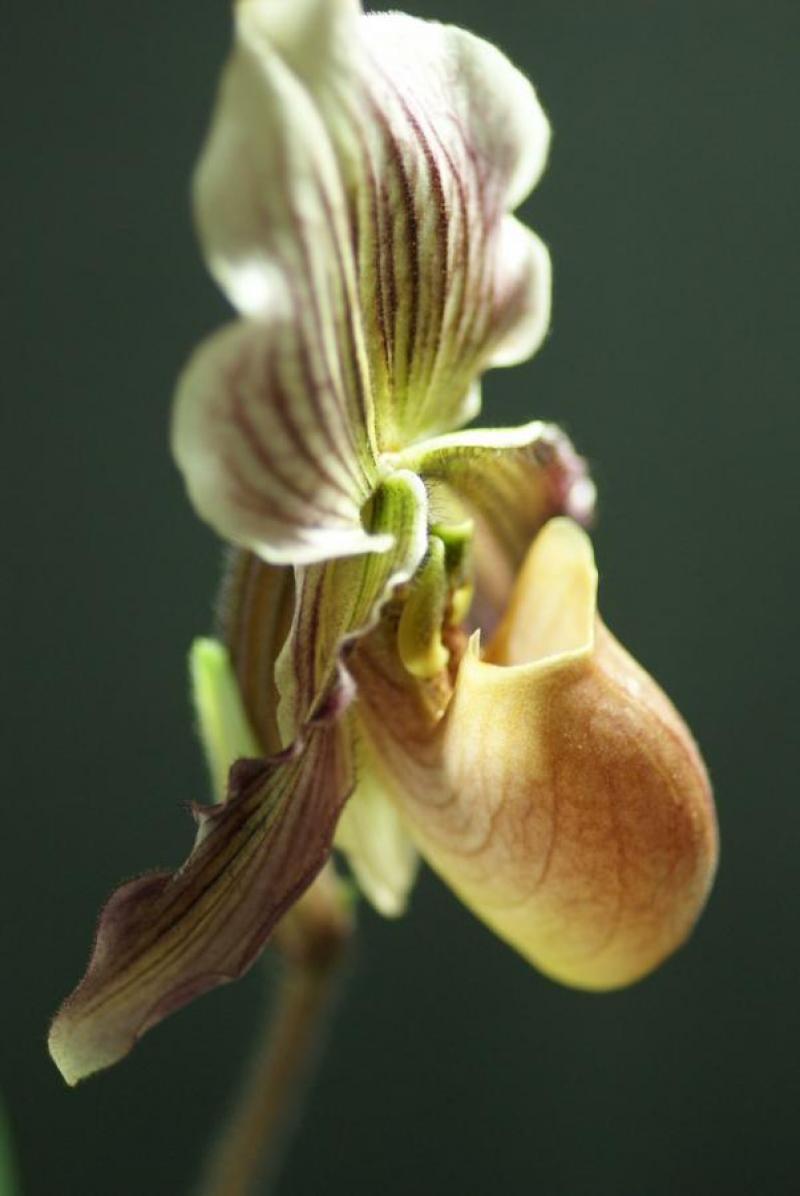Paphiopedilum mastersianum
Also known as: Master's Paphiopedilum or Paphiopedilum mastersianum h.f. album Paphiopedilum mastersianum var. mastersianum Paphiopedilum mastersianum var. mohrianum Paphiopedilum mohrianum Cordula mastersiana in the subfamily: Cypripedioideae
General Information
Master's Paphiopedilum is a medium sized warm growing epiphytic orchid belonging to the sub family Cypripedioideae. It is named after the English Orchid Magazine Publisher in the 19th century.
Plant Description
Grows to 30cm. Each new growth has numerous elliptic oblong shaped leaves that grow to 3.5-30cm long
Substrate(s)
- Coarse
Care Notes
These orchids like to be watered regulary, especially during warm weather, and prefer a well draining mix or also do well mounted, provided they can be watered daily or even many times a day.
These are quite a forgiving orchid, there are no special requirements to get this orchid to flower, just good care and consistent conditions. Larger plants may be more fussy and can react poorly to change; a poorly timed repotting, a pest infection or an unusually hot day can set them back for a couple of years. However, even plants that have been treated poorly can thrive, and if they are set back they often recover much stronger then they would otherwise be.
Climate
Grows at low to high elevations. Rainfall ranges from 114mm to 638mm per day, heaviest in December and lightest in May. Humidity ranges from 77% to 84%, highest in December and lowest in August. Temperature ranges from 15C to 23C, highest in May (16C to 23C) and lowest in January (15C to 19C).
Watering
These orchids prefer a constant supply of moisture, with a slight drying out between waterings. Saucers can be placed under pots to retain moisture during hot weather, however the saucers should be removed or let to dry every 1-2 weeks to prevent rot. Keep an eye on the plant especially in hot weather and look for cues of under/overwatering and adjust accordingly.
Fertiliser
These orchids do not need to be regularly fertilised and roots may be sensitive to salt build-up, dying back and therefore impairing the plants growth or even killing it.
If fertilising, use half to quarter of the recommended amount of fertiliser. If they receive fertiliser as part of a collection, be sure to flush out the pots regularly with fresh water and monitor the roots by checking how much resistance is given by the plant when nudged in its pot or mount. If the plant becomes wobbly or loose, repot in fresh mix or rinse the media/mount thoroughly and do not fertilise for at least 3 months.
Be sure to flush out excess fertiliser by running water through the media regularly year round. Use a high Nitrogen fertiliser year round. Use a high Phosphorous fertiliser year round.Potting
These plants are quite forgiving and will do well repotted ever 2-3 years. The mix should be coarse, well draining, and allow space for air to move and for roots to grow.
Alternatively, these plants will also do well mounted to tree fern or cork slabs, or mounted to trees.
Best time for repotting or mounting the orchids is the end of winter when new growths start to appear. Avoid repotting during hot weather,
Repotting is best done annually and after flowering.



